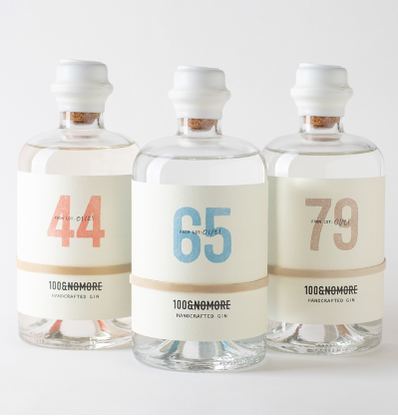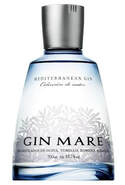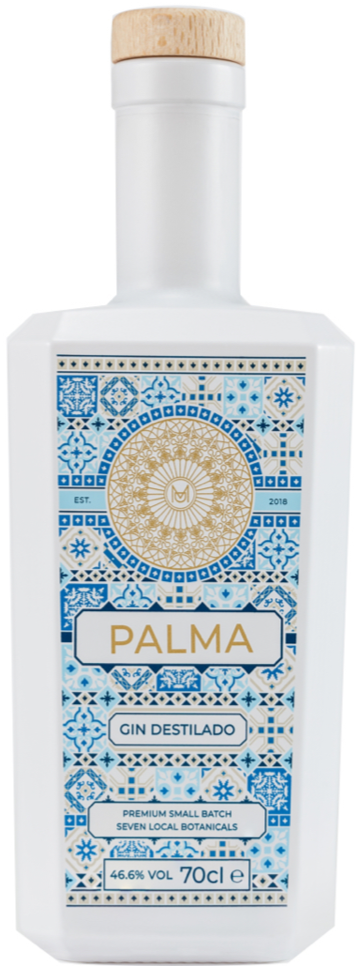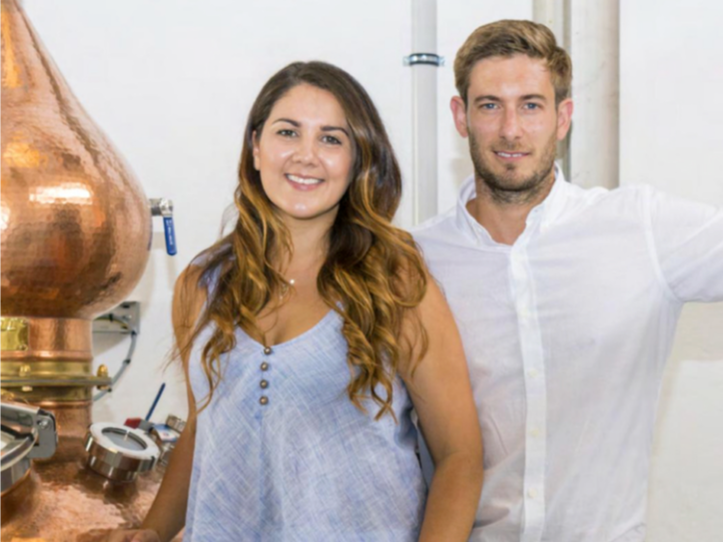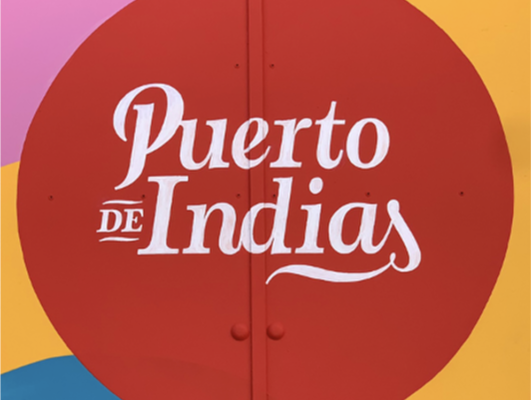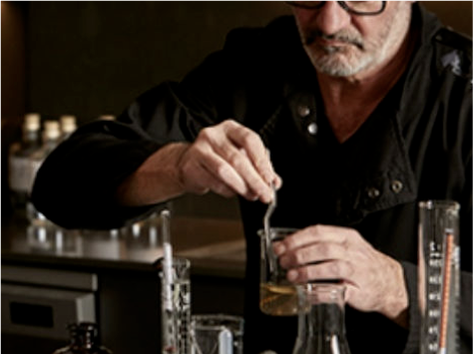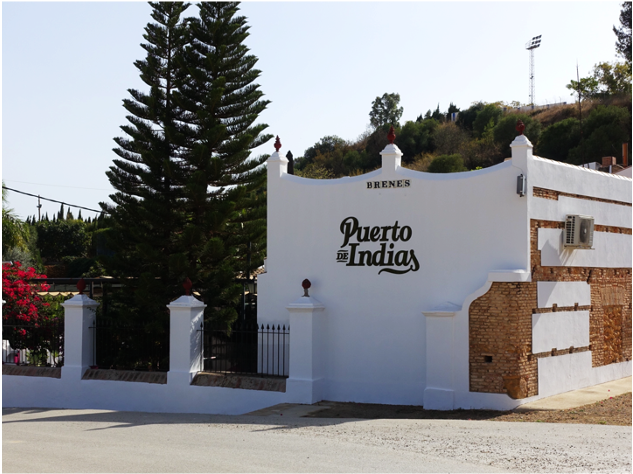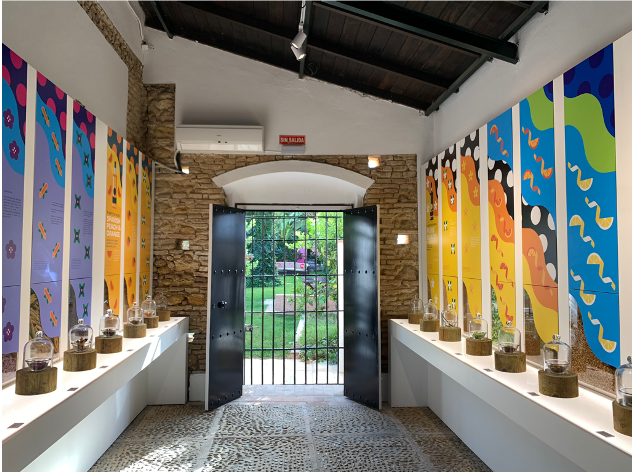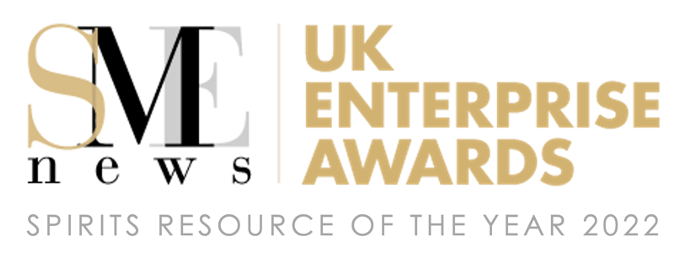Spanish Gin & Distilleries in Spain
On This Page: Spanish Gin and Distillery directory, reviews and tasting notes, distillery tours in Spain, interviews with Spanish distillers, and industry insights from Alex von Eisenhart Rothe from LAW Gin and Byron Holland from Mallorca Distillery.
|
With a long history of wine and spirit production and abundantly growing citrus fruits and botanicals, Spain has become home to many wonderful gins and distilleries, with the industry booming in recent years. And with stunning sun-baked coastlines, islands and countryside, there's inspiration everywhere and some gorgeous wild botanicals to be foraged too. From city distilleries in Madrid through to island distilleries on Majorca and Menorca, there are gins and distilleries for everyone to enjoy in Spain. Discover the best gins Spain has to offer!
|
Spanish Gin Reviews - A to Z
100 & No More
|
100 & No More was launched in 2021 in Barcelona and each gin in the range is distilled at La Destilateca in batches of up to 100 bottles. The range includes Sichaun, Brava, Oaxaca and Manaos Gins:
|
Gin 72
|
Gin 72 London Dry Gin is produced by Agua Guanches, launched in 2016 as the first and only distillery on the Canary Island of Fuerteventura. Gin 72 features 16 botanicals including juniper, apple, passionfruit, sage, star anise, and seaweed which is collected by hand on the beaches of northern Fuerteventura. Agua Guanches also produce El Beso de la Mulata - a compound gin featuring Jamaican pepper and liquorice.
|
Gin Mare
|
Launched in 2008 by Global Premium Brands (now Vantguard), Gin Mare is produced in a converted chapel at Distilerias Miquel Guanse on the Costa Dorada in Spain. It is a Mediterranean styled gin and was one of the first mainstream contemporary gins, featuring botanicals including rosemary, thyme, olive and basil:
|
Palma Gin
|
Launched in 2018 by Mallorca Distillery, the first distillery to be established in the capital of Palma, many of the botanicals are locally foraged, including juniper, almond flowers, orange leaves, tomato branches, citrus peels and lavender. The range also includes Palma Spiced Gin and Palma Vodka:
|
Puerto de Indias Gin
|
Launched in 2014 by Los Alcores de Carmona Distillery near Seville, Puerto de Indias Strawberry Gin was the first fresh strawberry gin to reach the market. The range also includes Puerto de Indias Classic Gin, Blackberry Gin, Orange Blossom & Peach Gin, and Pure Black Gin:
|
Xoriguer Mahon Gin
|
Xoriguer Gin (pronounced 'sho-ri-gair') is produced in Mahon on the island of Menorca, Spain, using a grape base alcohol. A family run business, 60% of Xoriguer Gin stays in Menorca and 40% is exported:
|
For more Spanish gins, try:
- Alkkemist Gin, BCN Gin, Gin Eva, GinRaw, Larios Gin, LAW Gin, Le Tribute Gin, Macaronesian White Gin, Monti Gin, Nordés Gin, Santamania Gin, Siderit Gin, and Sikkim Gin.
GIN FACT: Spain has become famous for 'Gintonica'. While the British traditionally served a G&T in a tall Collins glass, the Spanish ramped this up with bowl-shaped Copa glasses, large amounts of ice and often impressive garnishes. This style of serving has now spread around the world.
Distilleries & Tours in Spain
A small number of distilleries in Spain are open to visitors for tours and tastings, either all year round or in the peak summer months. They make for the ideal experience for gin lovers living in or visiting Spain:
- 1. Carmelitano Bodegas y Destilerías - Benicàssim
- 2. Destileria de Madrid (Santamania Gin) - Near Santander
- 3. Destileria Puerto de Indias - Near Seville
- 4. Destileria Siderit - Near Santander
- 5. Mallorca Distillery (Palma Gin) - Palma, Mallorca
- 6. Xoriguer Distillery - Mahon, Menorca
Meet the Makers
Get to know some of Spain's finest gin creators and distillers in our 'Meet the Maker' interviews. Find out how they created and launched their gin, how it's made, what botanicals are used, what you can experience if you visit their distilleries, how best to serve their gins and what they have planned for the future:
|
Byron Holland - Palma Gin
Read the Interview |
Behind the Scenes
Puerto de Indias Gin have recently renovated their historic distillery near Seville and the wonderful Katie Hughes, founder of What's Katie Doing?, went behind the scenes at the colourful distillery and reported back for The Gin Guide on the distillery's history and what you can enjoy and experience there.
The Inside Scoop
With Alex von Eisenhart Rothe and Byron Holland
We caught up with Alex von Eisenhart Rothe, Co-Founder of LAW Gin in Ibiza, and Byron Holland, Co-Founder of Mallorca Distillery and Palma Gin, to find out what makes Spanish Gin special and how the industry has grown in recent years:
A little bit of background...
Byron: Spain has a rich history when it comes to the production of alcoholic beverages, and this is not just limited to wine. Distilling is likely to have been carried out on the Iberian Peninsula since the arrival of the Moors over 1,000 years ago. Although historically, the focus of spirits production in Spain has been in derivatives of wine or grape distillates, such as Brandy and Orujo, local distilling expertise has translated well to the production of Gin.
Alex: One of the oldest Gin brands comes from Menorca - The Xoriguer Distillery in Mahon was established in 1794 and is still distilling the same recipe today. And through its colonies, Spain also brought Gin to the Philippines - the country with the highest Gin consumption per person in the world.
How has the Spanish Gin market changes in recent years?
Alex: Of course the 'Gin Wave' has hit Spain as well and many new brands have come to market in recent years. Spain is now reported to have the highest overall gin consumption in Europe.
Byron: In terms of production, the Spanish Gin Industry, has developed significantly in the past 10 years. There has been notable increase in the number of smaller craft producers throughout Spain, challenging the bigger traditional regional distilleries in terms of variety and quality in offerings. As a result, these larger producers have also revived and modernised their range of Gins.
What make Spanish Gins different or special?
Byron: Gin Distillers is Spain are spoilt for choice when it comes to the availability of local botanicals and base alcohols. Citrus fruits are available in abundance all over Spain and as a result, many offerings focus on showcasing the nuances in aroma of varieties local to producer. In additional to citrus, many Spanish Gins make use of local wildflowers and herbs, adding complexity and variety to the Gins distilled in Spain. We like to show off the richness in flavour of the Mallorquin Orange Peel, Lavender and Almond Blossom in our Palma Gin, all grown within 15km of the Distillery.
Alex: Spanish distillers are very open to experimenting with new and unusual botanicals. Starting with the neutral alcohol, some distillers use grape-based alcohol instead of the more common wheat-based alcohol. Lemons grow all year round and you can just pick them and put them fresh in your still, and rosemary grows everywhere too, so it is often used as a botanical or as a G&T garnish. Many distilleries and gin brands focus on regional products which are typical for the area where they are distilled. For example, we distill LAW Gin in Ibiza where the prickly pear has cultural heritage - so it was logical to use the fresh fruits for the recipe.
For more insights into the Spanish Gin industry, read our full 'World of Gin' interview feature with Alex and Byron.
A little bit of background...
Byron: Spain has a rich history when it comes to the production of alcoholic beverages, and this is not just limited to wine. Distilling is likely to have been carried out on the Iberian Peninsula since the arrival of the Moors over 1,000 years ago. Although historically, the focus of spirits production in Spain has been in derivatives of wine or grape distillates, such as Brandy and Orujo, local distilling expertise has translated well to the production of Gin.
Alex: One of the oldest Gin brands comes from Menorca - The Xoriguer Distillery in Mahon was established in 1794 and is still distilling the same recipe today. And through its colonies, Spain also brought Gin to the Philippines - the country with the highest Gin consumption per person in the world.
How has the Spanish Gin market changes in recent years?
Alex: Of course the 'Gin Wave' has hit Spain as well and many new brands have come to market in recent years. Spain is now reported to have the highest overall gin consumption in Europe.
Byron: In terms of production, the Spanish Gin Industry, has developed significantly in the past 10 years. There has been notable increase in the number of smaller craft producers throughout Spain, challenging the bigger traditional regional distilleries in terms of variety and quality in offerings. As a result, these larger producers have also revived and modernised their range of Gins.
What make Spanish Gins different or special?
Byron: Gin Distillers is Spain are spoilt for choice when it comes to the availability of local botanicals and base alcohols. Citrus fruits are available in abundance all over Spain and as a result, many offerings focus on showcasing the nuances in aroma of varieties local to producer. In additional to citrus, many Spanish Gins make use of local wildflowers and herbs, adding complexity and variety to the Gins distilled in Spain. We like to show off the richness in flavour of the Mallorquin Orange Peel, Lavender and Almond Blossom in our Palma Gin, all grown within 15km of the Distillery.
Alex: Spanish distillers are very open to experimenting with new and unusual botanicals. Starting with the neutral alcohol, some distillers use grape-based alcohol instead of the more common wheat-based alcohol. Lemons grow all year round and you can just pick them and put them fresh in your still, and rosemary grows everywhere too, so it is often used as a botanical or as a G&T garnish. Many distilleries and gin brands focus on regional products which are typical for the area where they are distilled. For example, we distill LAW Gin in Ibiza where the prickly pear has cultural heritage - so it was logical to use the fresh fruits for the recipe.
For more insights into the Spanish Gin industry, read our full 'World of Gin' interview feature with Alex and Byron.

